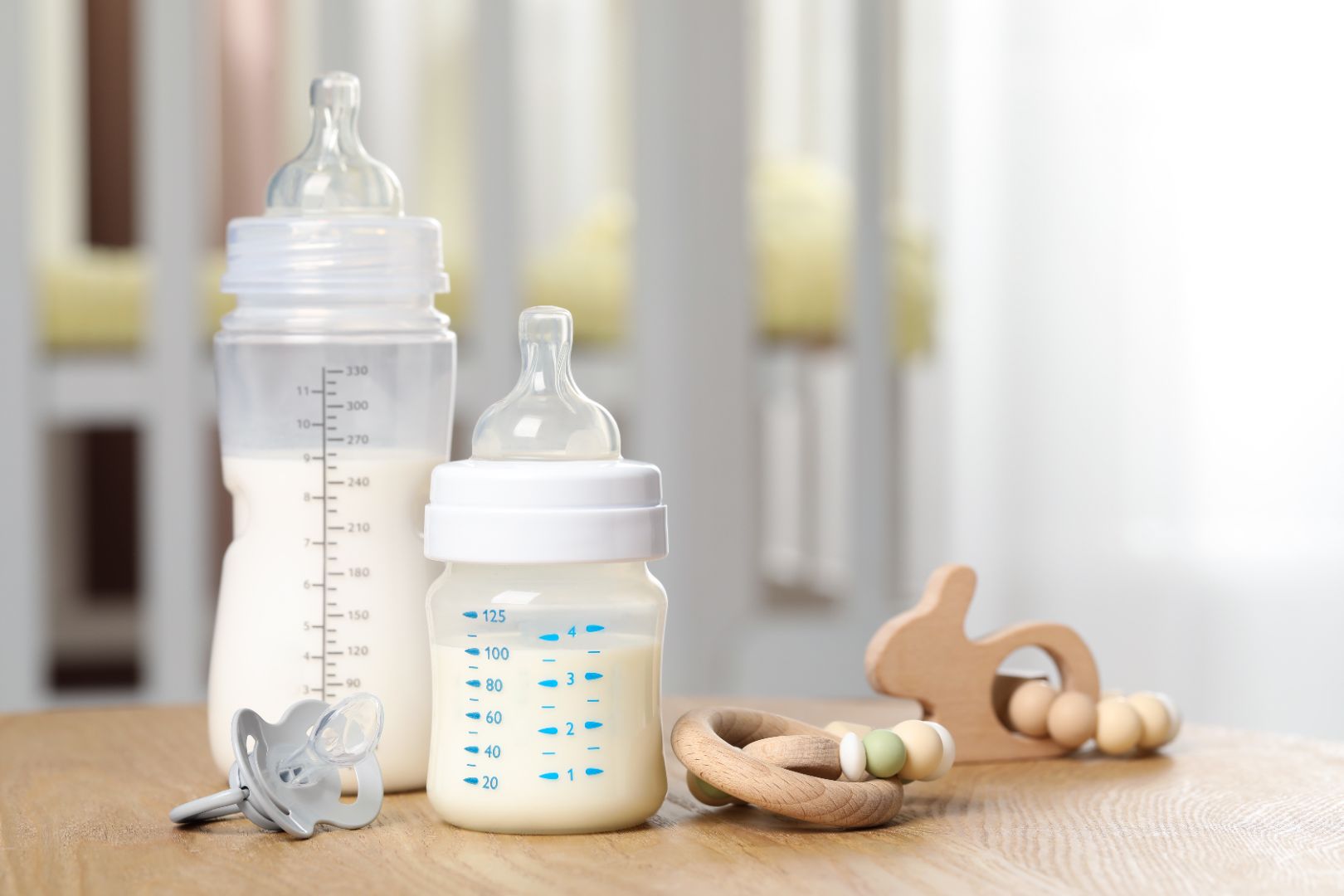Published March 15, 2024

Navigating the Transition: Introducing a Bottle to Your Breastfed Baby
Your feeding journey is just as unique as your little one. For parents and caregivers looking to introduce a bottle to a breastfed baby, this transition can seem daunting. Whether you're returning to work, sharing feeding duties, or simply needing a break, introducing bottle feeding while maintaining breast milk supply requires patience, strategy, and sometimes, a bit of creativity.
Understanding the Best Time to Introduce a Bottle
Just like everything else, timing plays a crucial role in the successful introduction of a bottle to a breastfed baby. Lactation consultants often recommend waiting until breastfeeding is well-established but not delaying too long. Typically, this sweet spot occurs around 3 to 4 weeks of age, and before 8 weeks of age. Discuss with your doctor what’s right for your baby.
The Challenge: When Babies Refuse the Bottle
It's not uncommon for breastfed babies to be hesitant or even outright refuse a bottle. The difference in milk flow, bottle nipple texture, and the experience itself can be confusing for babies accustomed to breastfeeding. When a baby won’t take a bottle, parents can feel frustrated and worried, fearing their baby might not get enough nutrition if they cannot accept a bottle.
Strategies for Introducing the Bottle to a Breastfed Baby
Choose the Right Time: Pick a calm, quiet time when your baby is not too hungry or too full. Offering the bottle when your baby is in a good mood can make a significant difference.
Start with Expressed Breast Milk: Babies often prefer the familiar taste of breast milk. Using expressed milk in the bottle can make the transition smoother. This also helps maintain your milk supply; ensuring your baby is receiving breast milk even while bottle feeding will require the lactating parent to pump, and this encourages stable milk production in the absence of a nursing feeding.
Mimic Breastfeeding Conditions: Hold your baby in a position similar to how you do during breastfeeding by keeping them level with the nipple (versus tilting the bottle at a diagonal). Offering the bottle in a familiar setting, like the room you typically use for nursing feedings, can also help your baby make the connection.
Introduce a Suitable Bottle Nipple: Look for a bottle nipple designed to mimic the nipple’s shape. While some bottles will advertise a “breast-like” shape, it’s more important to focus on nipple shape. You want a nipple that has a gradual slope and a wide base. This similarity can encourage your baby to latch onto the bottle more readily and effectively.
Let Someone Else Offer the Bottle: Sometimes, babies associate feeding exclusively with their mother. Having another caregiver offer the bottle can sometimes encourage acceptance.
Feed Small Amounts Frequently: Introducing the bottle by offering small amounts of milk several times a day can help your baby gradually get used to the new feeding method without overwhelming them.
Overcoming Refusal: Patience and Persistence
If your baby is refusing to take a bottle, don’t fret! Patience and persistence are key. Try introducing the bottle once a day, ideally when your baby is relaxed but showing early signs of hunger. The goal is to make bottle feeding a positive experience for your baby, without any stress or pressure.
Consulting a Lactation Consultant
If you encounter persistent difficulties with introducing a bottle, consulting a lactation consultant can provide personalized advice and support. They can offer strategies tailored to your baby’s specific needs, helping to ensure a smoother transition while addressing any concerns you have about milk supply or the feeding process.
Preparing for the Return to Work
For many parents, the need to introduce a bottle is often driven by an impending return to work. Planning ahead and gradually introducing bottle feeding can help ease this transition. Begin offering your baby a bottle at least a few weeks before you need to be away, and consistently practicing day after day, will allow time for both of you to adjust.
Introducing a bottle to a breastfed baby is a journey that requires patience, understanding, and flexibility. By choosing the right time, using expressed milk, and offering the bottle in a comforting and familiar manner, you can help your baby accept the bottle while maintaining a strong breastfeeding relationship. Remember, every baby is unique, and what works for one may not work for another. With time, patience, and perhaps a bit of trial and error, you and your baby can (and will) successfully navigate this transition.
The content on this site is for informational purposes only and not intended to be a substitute for professional medical advice, diagnosis or treatment. Discuss any health or feeding concerns with your infant’s pediatrician. Never disregard professional medical advice or delay it based on the content on this page.



